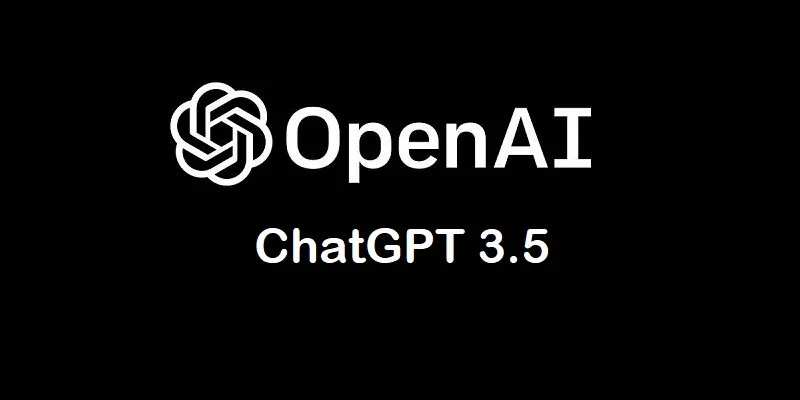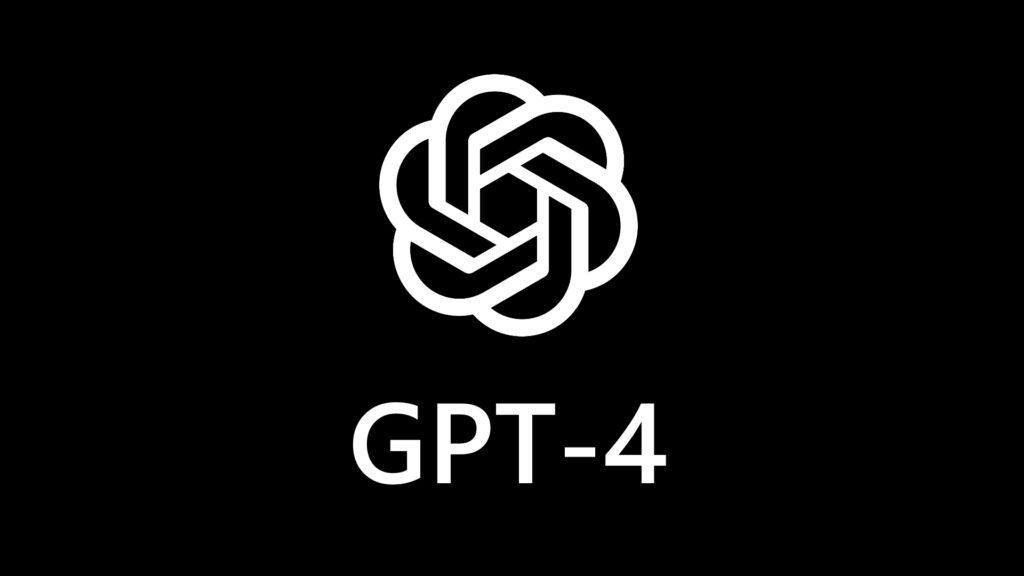Introduction
A. The transformative impact of language models
Language models have revolutionized the way we interact with technology and have become an integral part of various industries. These powerful AI systems can understand and generate human-like text, enabling seamless communication between humans and machines.
B. A brief overview of GPT-3 and ChatGPT-3.5
GPT-3.5, an advanced version of OpenAI’s flagship language model, GPT-3, has garnered significant attention for its capabilities in natural language processing. Additionally, ChatGPT-3.5, a specific variant of GPT-3.5, focuses on enhancing conversational AI, making it even more adept at generating interactive and contextually relevant responses.
C. Promising advancements and expectations surrounding GPT-4
As the anticipation builds for the next iteration, GPT-4, the tech industry eagerly awaits disruptive advancements and ground-breaking breakthroughs. OpenAI has hinted at exciting plans, promising further improvements in performance. Let us delve into the details and explore the differences between ChatGPT-3.5 and GPT-4.
Understanding GPT-3.5

A. GPT-3’s ground-breaking features and achievements
GPT-3 was a game-changer in the field of natural language processing. It demonstrated remarkable capabilities such as understanding context, generating coherent sentences, and even providing logical reasoning to some extent. It opened doors to numerous applications, from writing assistance to translation services.
B. Limitations and shortcomings observed in GPT-3
Despite GPT-3’s significant achievements, it had its fair share of limitations. One prominent challenge was the model’s struggle to maintain consistency in long conversations. GPT-3 also occasionally produced responses lacking accuracy or context. These shortcomings prompted OpenAI to develop an upgraded version, GPT-3.5, to overcome these limitations and enhance the system’s overall performance.
C. Introduction to GPT-3.5 as an upgraded version
-
Enhanced capabilities and improvements
GPT-3.5 builds upon the strengths of its predecessor while addressing the identified limitations. It has undergone refinements and enhancements that enable it to generate more accurate and contextually appropriate responses. The upgraded version also showcases improved fluency and coherence.
-
Addressing previous issues and refining performance
GPT-3.5 has made significant strides in tackling the challenges faced by GPT-3. By leveraging advanced training techniques and refining the underlying architecture, OpenAI has increased the model’s ability to maintain coherence and overall quality of generated text.
Exploring ChatGPT-3.5
A. Introduction to ChatGPT-3.5 and its purpose
ChatGPT-3.5 is a variant of GPT-3.5 designed specifically for conversational AI applications. It aims to facilitate more interactive and dynamic conversations by providing contextually relevant responses. This variant is tailored to excel in generating dialogue responses that mimic human-like interactions.
B. ChatGPT-3.5’s unique capabilities in conversational AI
ChatGPT-3.5 boasts several unique features that set it apart in the realm of conversational AI. It understands contextual cues, interprets ambiguous queries, and produces coherent and engaging dialogue. Its ability to mimic human conversation effectively helps create a more immersive and satisfying user experience.
C. Real-world applications and industries impacted by ChatGPT-3.5
-
Customer support and service
ChatGPT-3.5 enables businesses to enhance their customer support systems by providing seamless and personalized interactions. It can understand complex user queries and respond appropriately, improving customer satisfaction and reducing response times.
-
Content generation and writing assistance
With its conversational prowess, ChatGPT-3.5 proves to be an invaluable tool for content generation and writing assistance. It can provide creative suggestions, help with brainstorming sessions, and even offer grammar and style guidance, thus significantly streamlining the writing process.
-
Language translation and interpretation
The linguistic capabilities of ChatGPT-3.5 make it an ideal candidate for language translation and interpretation services. Its contextual understanding allows for accurate translations and helps bridge language barriers.
-
And many more
ChatGPT-3.5’s potential extends far beyond the mentioned applications. It can be leveraged in various industries, such as legal services, education, and even entertainment, providing tailored responses and intelligent insights.
Anticipating GPT-4

A. Highlights of OpenAI’s plans for GPT-4
OpenAI’s vision for GPT-4 promises dramatic advancements in the field of language models. While specific details are yet to be fully disclosed, OpenAI has shared its intent to introduce major breakthroughs in performance, efficiency, and overall intelligence.
B. Expected improvements and major breakthroughs
GPT-4 is expected to push the boundaries of language models even further. OpenAI aims to improve the system’s understanding of complex contexts, reduce biases, and enhance its ability to generate natural and human-like text. This next-generation model is set to revolutionize several sectors and industries.
C. Potential impact in various sectors and industries
-
Healthcare and medical research
GPT-4’s enhanced language understanding and generation capabilities can significantly impact medical research and healthcare. It can aid in analysing vast amounts of medical literature, assisting doctors in diagnosing rare diseases based on symptoms, and even provide personalized medical recommendations.
-
Education and e-learning
GPT-4 can revolutionize the education sector by providing personalized digital tutors and facilitating interactive e-learning experiences. It can generate educational materials, answer student queries, and adapt to individual learning styles, thereby improving the quality and accessibility of education.
-
Business intelligence and decision making
GPT-4’s advanced language processing abilities make it a powerful tool for business intelligence. It can analyse market trends, customer feedback, and industry reports, assisting in informed decision-making and driving business growth.
The Differences between ChatGPT-3.5 and GPT-4

A. Architecture and underlying models
-
Structural variances in ChatGPT-3.5 and GPT-4
ChatGPT-3.5 and GPT-4 employ different architectural models to support their respective functionalities. While both models share similarities, GPT-4 is expected to introduce novel architectural enhancements to further improve performance and efficiency.
-
Technological advancements and enhancements
GPT-4 will harness advanced techniques and technologies, surpassing ChatGPT-3.5 in key areas. It is anticipated to showcase substantial progress in language understanding, context preservation, and response coherence, redefining the benchmark for AI language models.
B. Training methods and strategies employed
-
Data augmentation and fine-tuning techniques
Both ChatGPT-3.5 and GPT-4 benefit from training through data augmentation, which involves exposing the models to a vast and diverse range of language data. This process ensures that the models can handle various contexts and provide accurate responses.
-
Incorporation of human feedback and reinforcement learning
GPT-4 aims to integrate human feedback and reinforcement learning, enabling it to learn and adapt dynamically. Real-time user interactions and feedback will contribute to refining the model, allowing it to improve its responses based on user preferences and expectations.
Performance and Language Generation Comparison
A. Evaluation metrics used to assess GPT models
GPT models are typically evaluated based on criteria such as language fluency, coherence, and adaptability to diverse conversational styles. Metrics like perplexity, contextual accuracy, and user satisfaction help gauge the models’ performance and effectiveness.
B. Comparative analysis of ChatGPT-3.5 and GPT-4 performance
-
Language fluency and coherence
GPT-4 is expected to exhibit superior language fluency and coherence compared to ChatGPT-3.5, thanks to architectural advancements and improved training strategies. These enhancements will result in more natural and contextually appropriate responses.
-
Consistency and context understanding
GPT-4’s refined architecture and training approaches are anticipated to address the challenges of maintaining consistency in long conversations and comprehending complex contexts. This is an area where ChatGPT-3.5 may fall short in comparison.
-
Avoidance of biases and ethical concerns
OpenAI has prioritized mitigating biases in its language models, and this commitment is expected to continue with GPT-4. While ChatGPT-3.5 significantly reduces biases from GPT-3, GPT-4 is likely to incorporate even more robust measures to eliminate biases and promote ethical AI usage.
Impact on Ethical Considerations
A. Risks and challenges associated with AI language models
AI language models, including GPT-3.5 and GPT-4, present potential risks such as the propagation of misinformation, ethical concerns surrounding content generation, and the amplification of existing biases. It is crucial to address these challenges to ensure responsible development and usage of these technologies.
B. Ensuring responsible development of GPT-4
OpenAI acknowledges the importance of responsible AI development and actively engages in ongoing research and efforts to mitigate risks. With GPT-4, OpenAI is expected to introduce robust frameworks for addressing ethical considerations and enabling responsible use of the language model.
C. Addressing concerns about misinformation and harmful content
OpenAI is committed to creating an ecosystem that minimizes the spread of misinformation and harmful content. As GPT-4 is developed, OpenAI is likely to implement measures that enhance fact-checking, content verification, and the integration of ethical guidelines to combat these concerns.
Potential Limitations and Trade-Offs
A. Recognizing limitations in ChatGPT-3.5 and GPT-4
While ChatGPT-3.5 and GPT-4 strive to deliver remarkable performance, it is essential to recognize their limitations. These language models may occasionally generate incorrect or nonsensical responses, requiring careful monitoring and guidance from users to ensure accurate outcomes.
B. Balancing performance and leveraging feedback mechanisms
To achieve optimal performance, users should actively provide feedback to ChatGPT-3.5 and GPT-4. Leveraging user feedback helps refine the models and address their limitations, resulting in continuous improvements and better responses.
C. Exploring the delicate balance between user customization and ethical boundaries
Language models empower users with customization options, but ethical considerations must be upheld. Striking a balance between personalized user experiences and responsible content generation is crucial to avoid enabling malicious intent or the creation of misleading information.
Practical Implementations of GPT Models
A. Harnessing the power of ChatGPT-3.5 for businesses and individuals
Businesses can leverage ChatGPT-3.5 for improved customer interactions, content generation, and language translation services. Individuals can benefit from its writing assistance and creative brainstorming capabilities, enhancing personal productivity and fostering creativity.
B. Preparing for GPT-4 adoption and usage scenarios
As GPT-4 inches closer to reality, businesses and individuals should prepare for its adoption. Exploring potential use cases, identifying areas where GPT-4 can add value, and planning for integration will maximize the benefits of this advanced language model.
C. Realizing the full potential and achieving value from these language models
To unlock the full potential of language models, users should embrace a growth mindset and actively explore creative ways to utilize ChatGPT-3.5 and prepare for the upcoming GPT-4 rollout. By harnessing these models effectively, organizations and individuals can achieve enhanced productivity, accuracy, and efficiency.
Concluding Remarks
A. Successes and milestones achieved by GPT-3.5 and ChatGPT-3.5
GPT-3.5 and its ChatGPT variant have ushered in a new era of conversational AI, transforming the way humans interact with machines. These achievements stand as testaments to the immense potential of AI in enhancing communication, productivity, and problem-solving.
B. The promising horizon with GPT-4 and its potential impact
As GPT-4 looms on the horizon, technology enthusiasts eagerly anticipate its arrival, expecting ground-breaking advancements in language models. With improved performance, mitigated biases, and enhanced context understanding, GPT-4 has the potential to reshape industries and revolutionize human-machine interaction.
C. Embracing responsible AI development and ethical usage
As GPT-4 and future iterations continue to push the boundaries of AI capabilities, it is crucial to prioritize responsible AI development and ethical usage. By adhering to ethical guidelines, continuously addressing biases, and staying vigilant against the spread of misinformation, we can create a future where AI language models serve as powerful and responsible tools.
FAQs
1. Is GPT-4 backward-compatible with GPT-3.5 models?
Yes, OpenAI aims to ensure backward-compatibility between GPT-4 and GPT-3.5 models. This compatibility allows for a seamless transition and enables users to transfer their existing GPT-3.5 models, reducing disruption and facilitating a smooth migration to the upgraded version.
2. How does ChatGPT-3.5 handle multilingual conversations?
ChatGPT-3.5 possesses the ability to handle multilingual conversations. It can generate contextually relevant responses in multiple languages, offering a flexible and inclusive conversational experience for users across different linguistic backgrounds.
3. Will GPT-4 introduce any measures to mitigate biases in output?
OpenAI recognizes the importance of bias mitigation and is actively working on incorporating measures to further reduce biases in GPT-4’s output. Ethical development, responsible data curation, and continuous feedback from users are pivotal to ensure the model’s output remains impartial and unbiased.
4. Can GPT models learn and adapt in real-time?
GPT models, including GPT-4, are designed to learn and adapt based on real-time user interactions and feedback. This adaptability allows the models to improve their responses, address limitations, and refine their performance over time, creating a more customized and satisfying user experience.
5. What are the potential implications of GPT-4 in the field of creative writing?
The introduction of GPT-4 holds immense potential for the field of creative writing. With its advanced language generation capabilities, GPT-4 can inspire writers, offer novel perspectives, and assist in generating innovative and captivating narratives, fostering a new era of creativity and storytelling.


Unveiling the Hidden Powerhouse: ChatGPT-3.5 vs. GPT-4 – What’s the Difference?